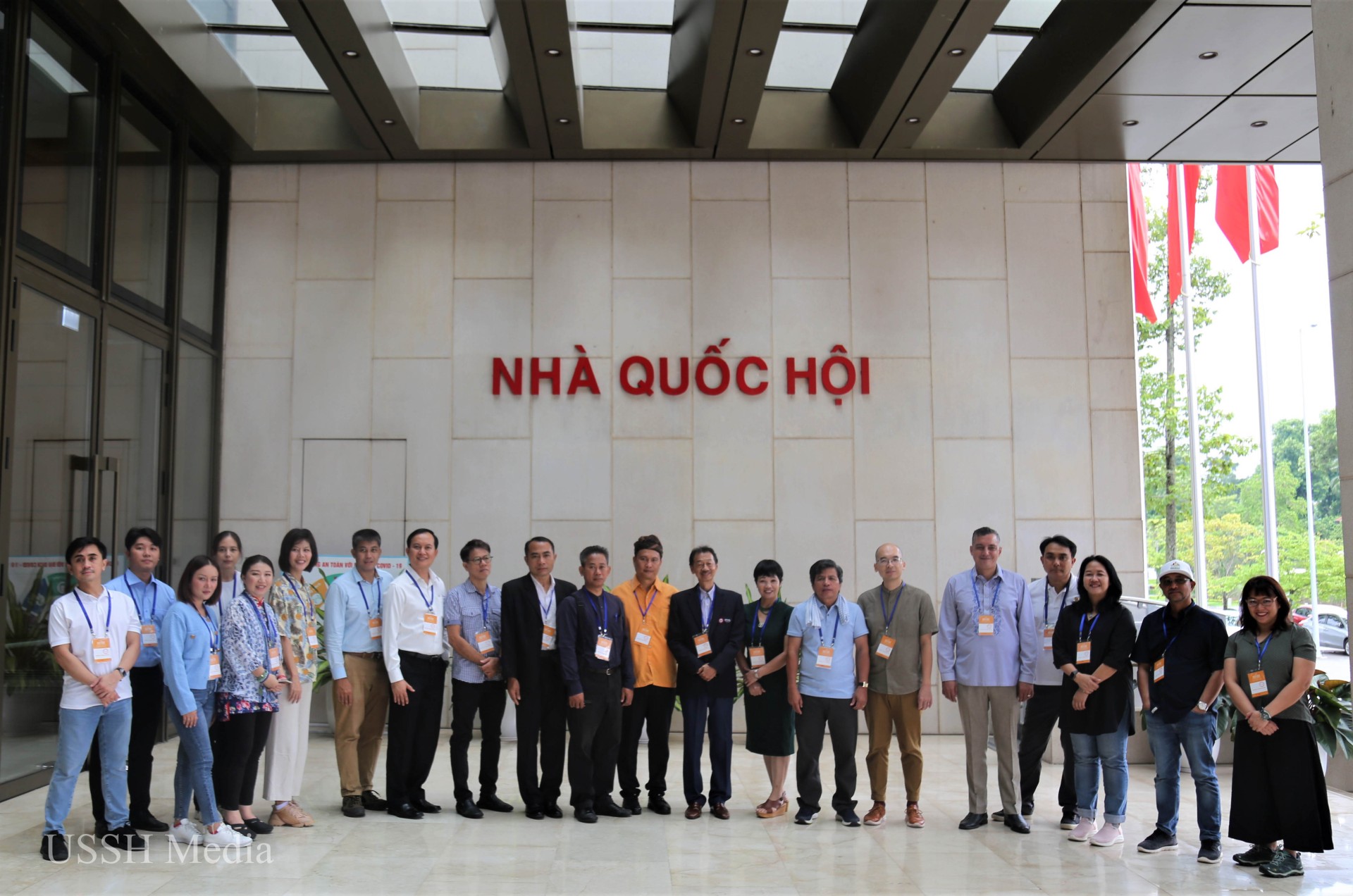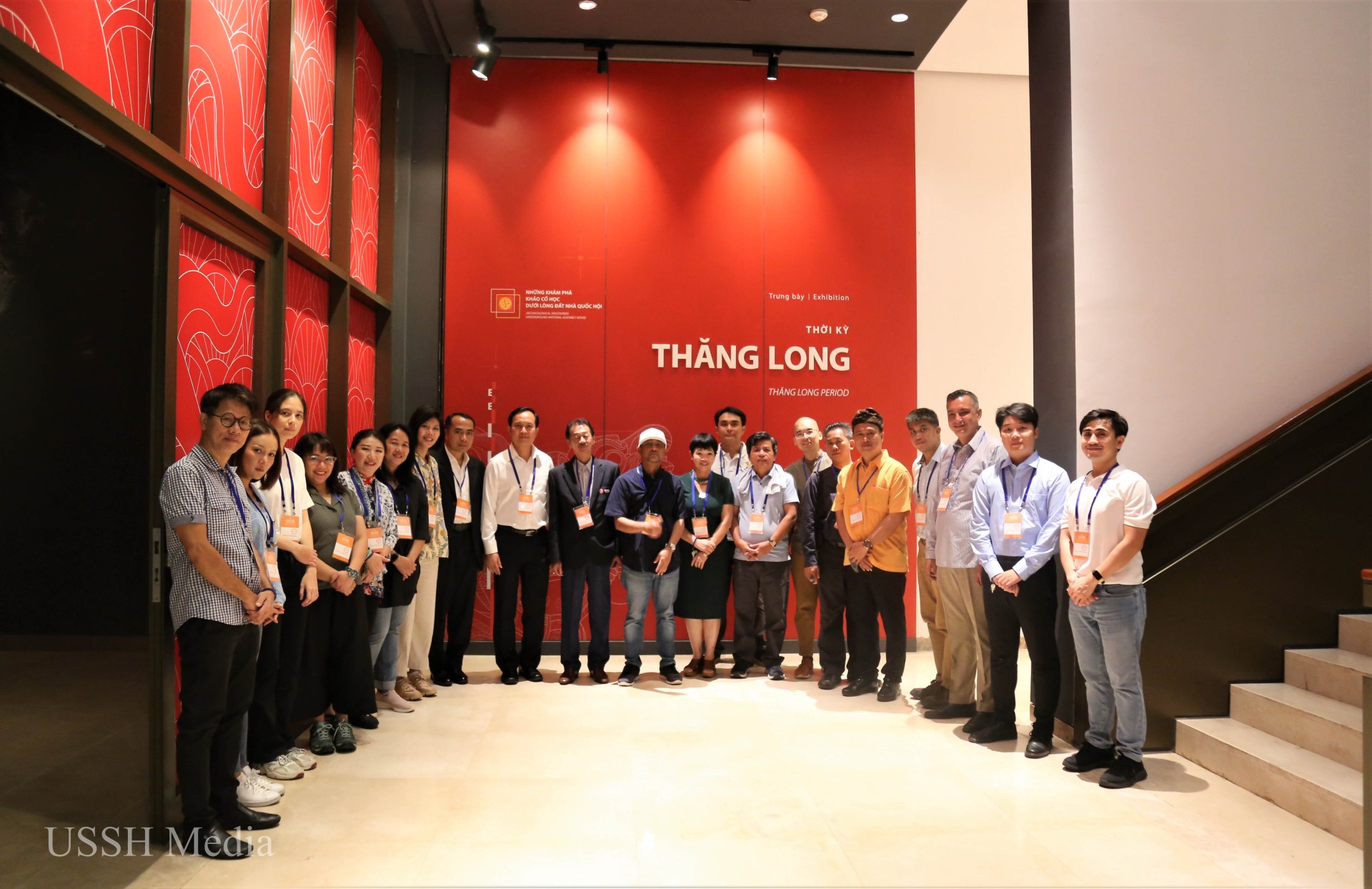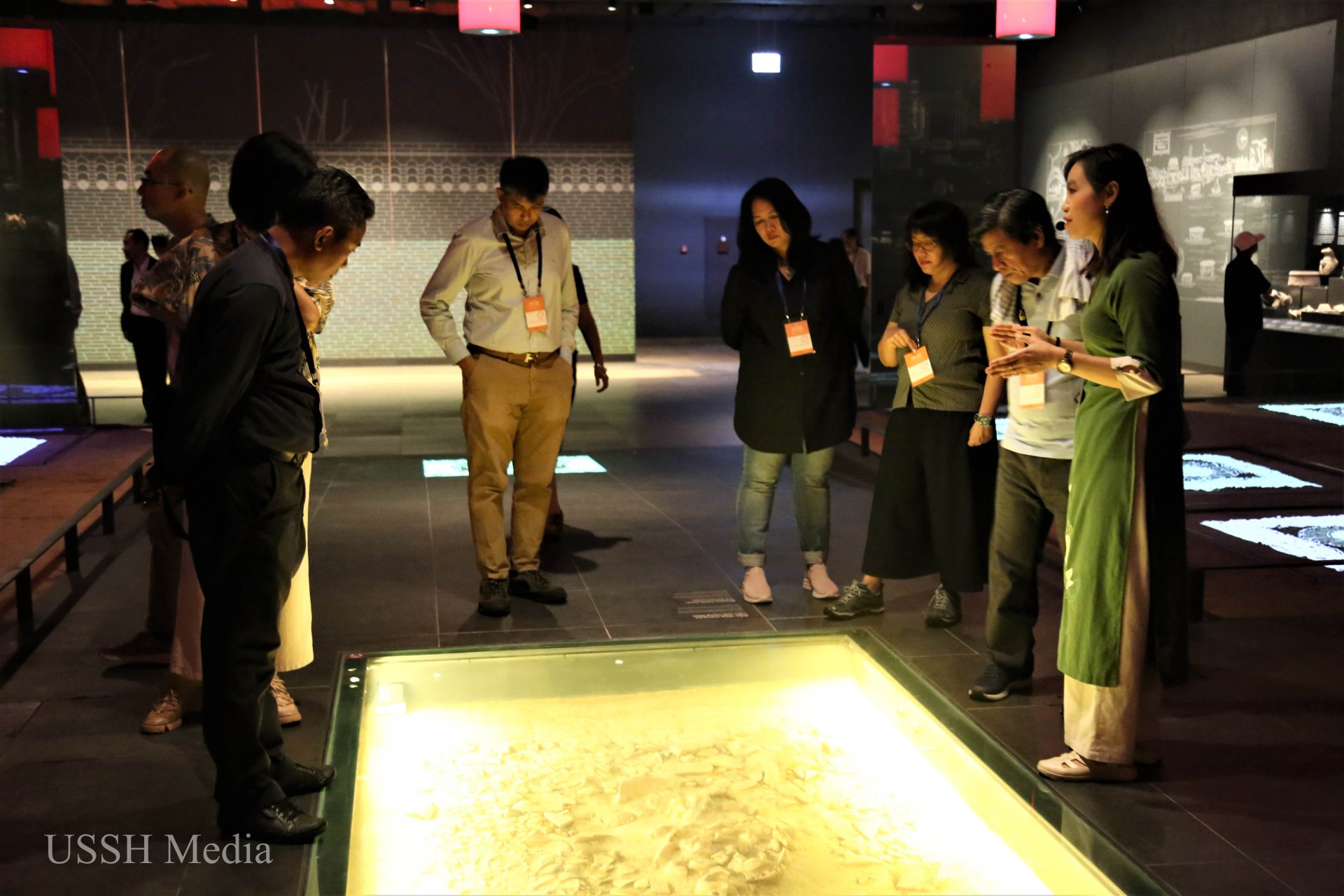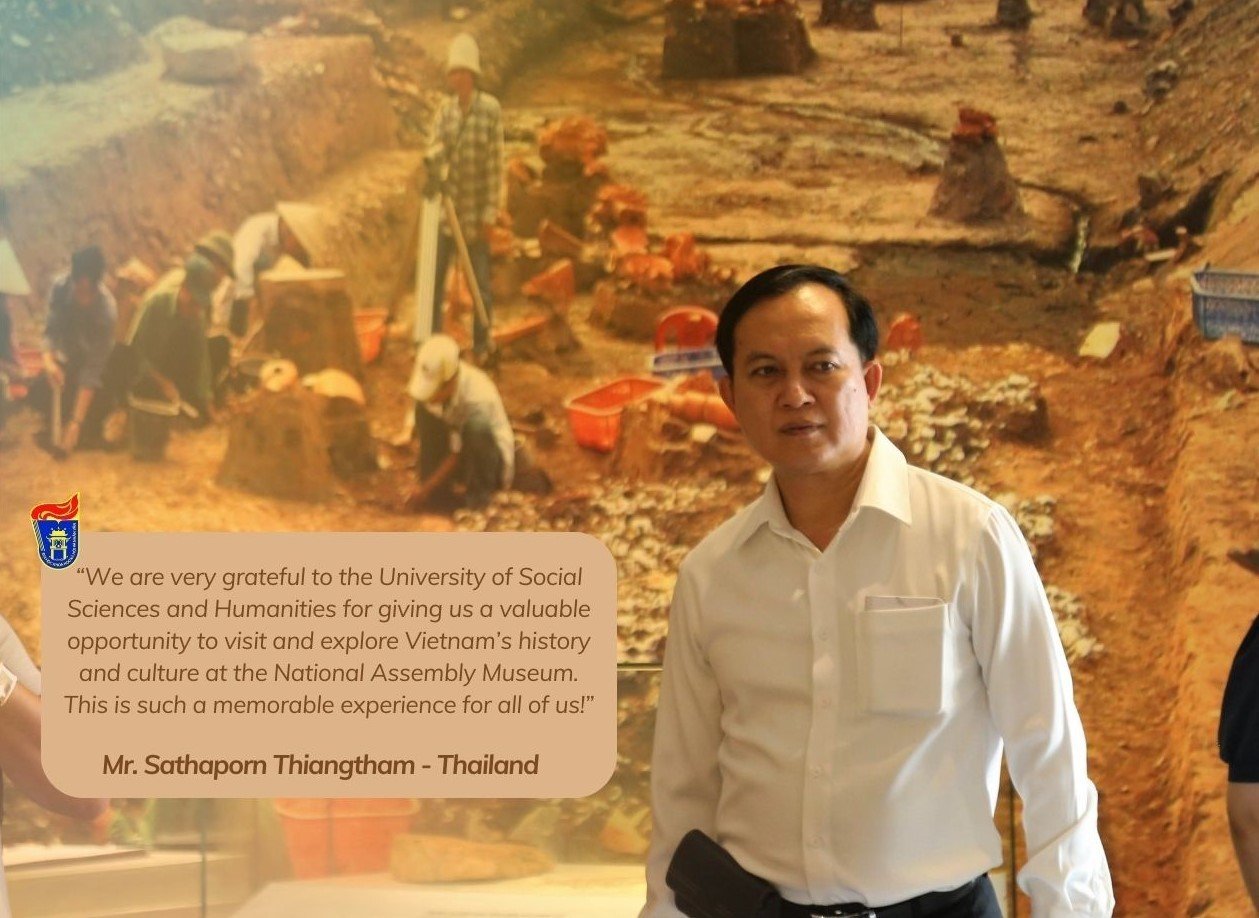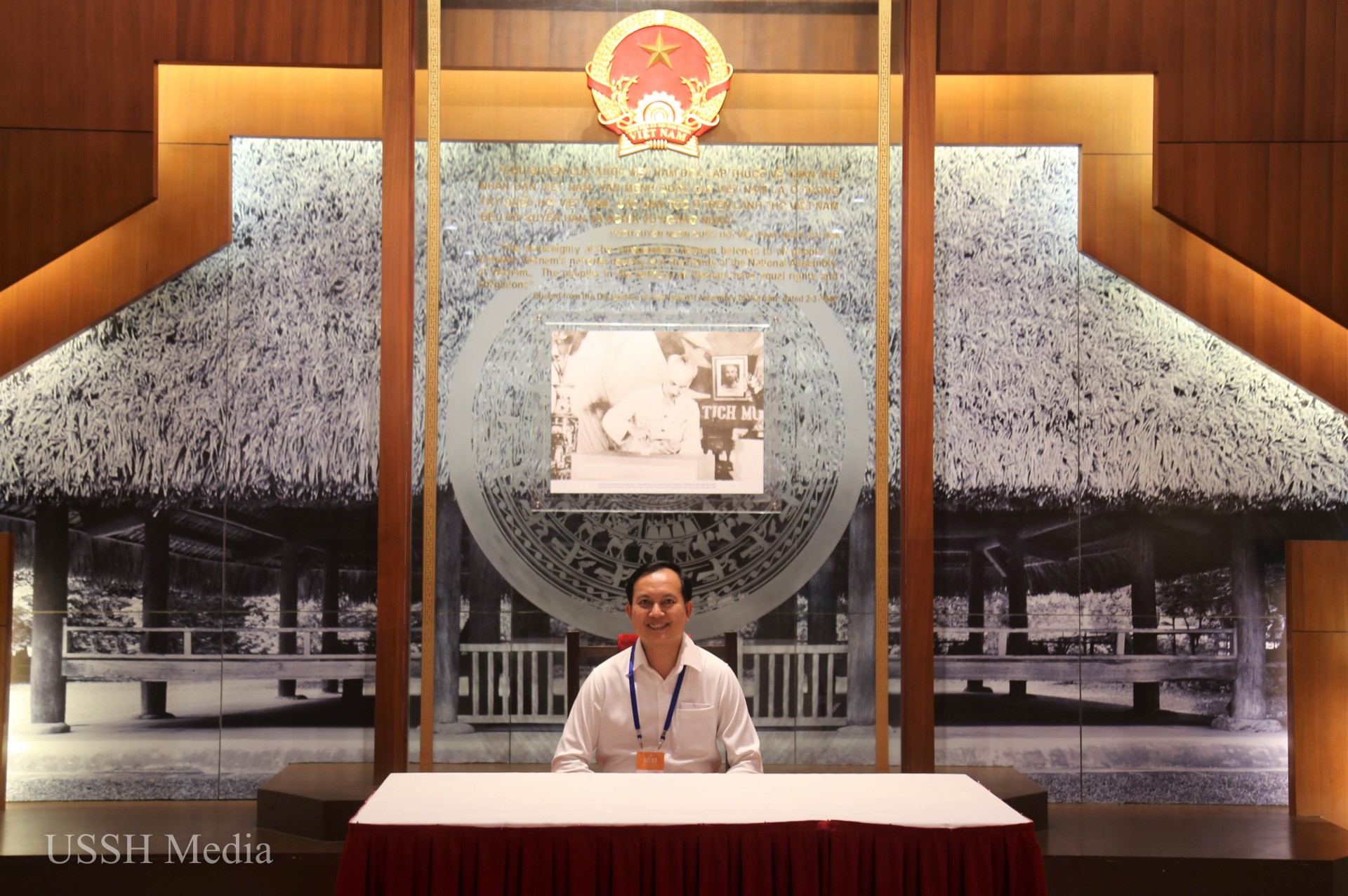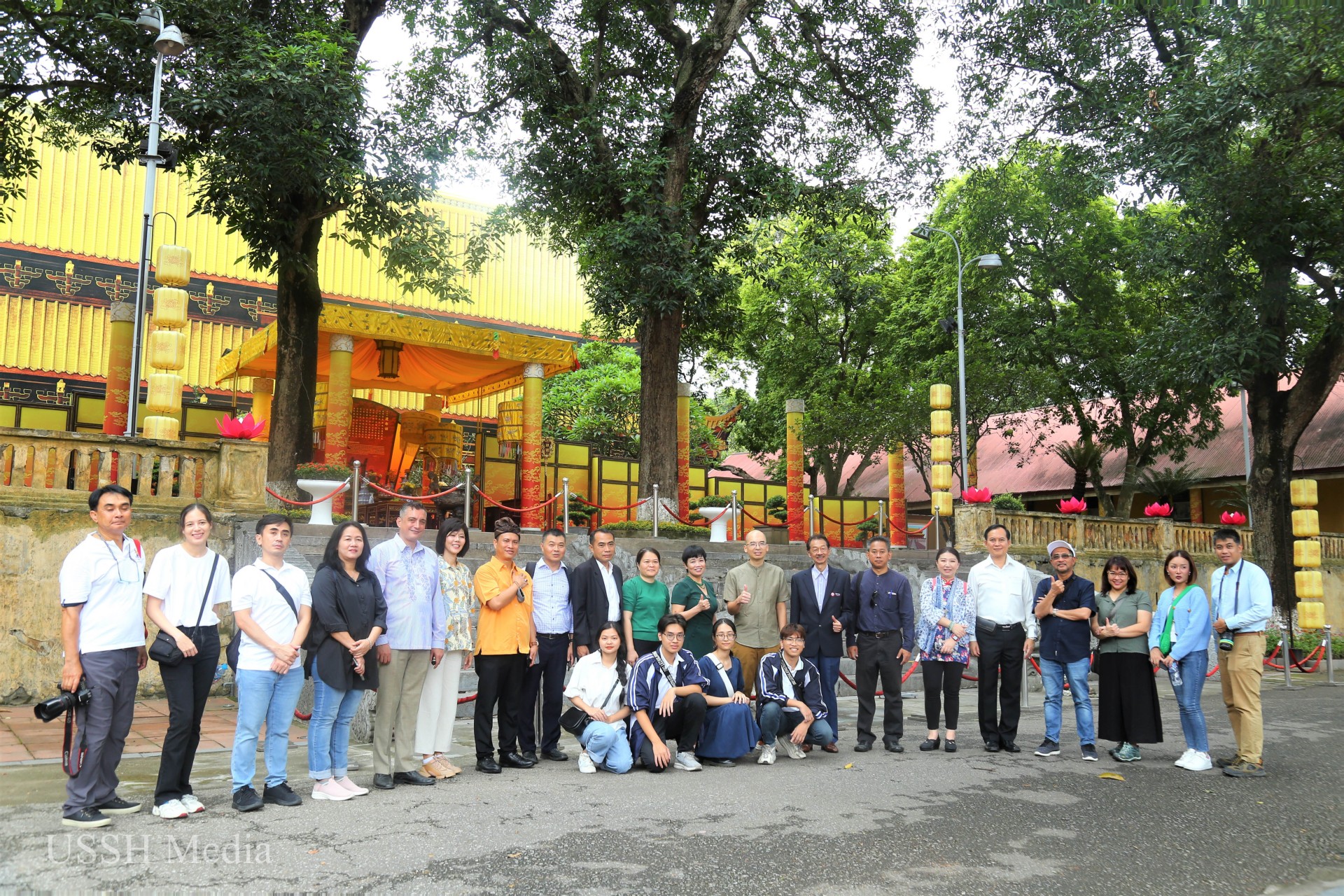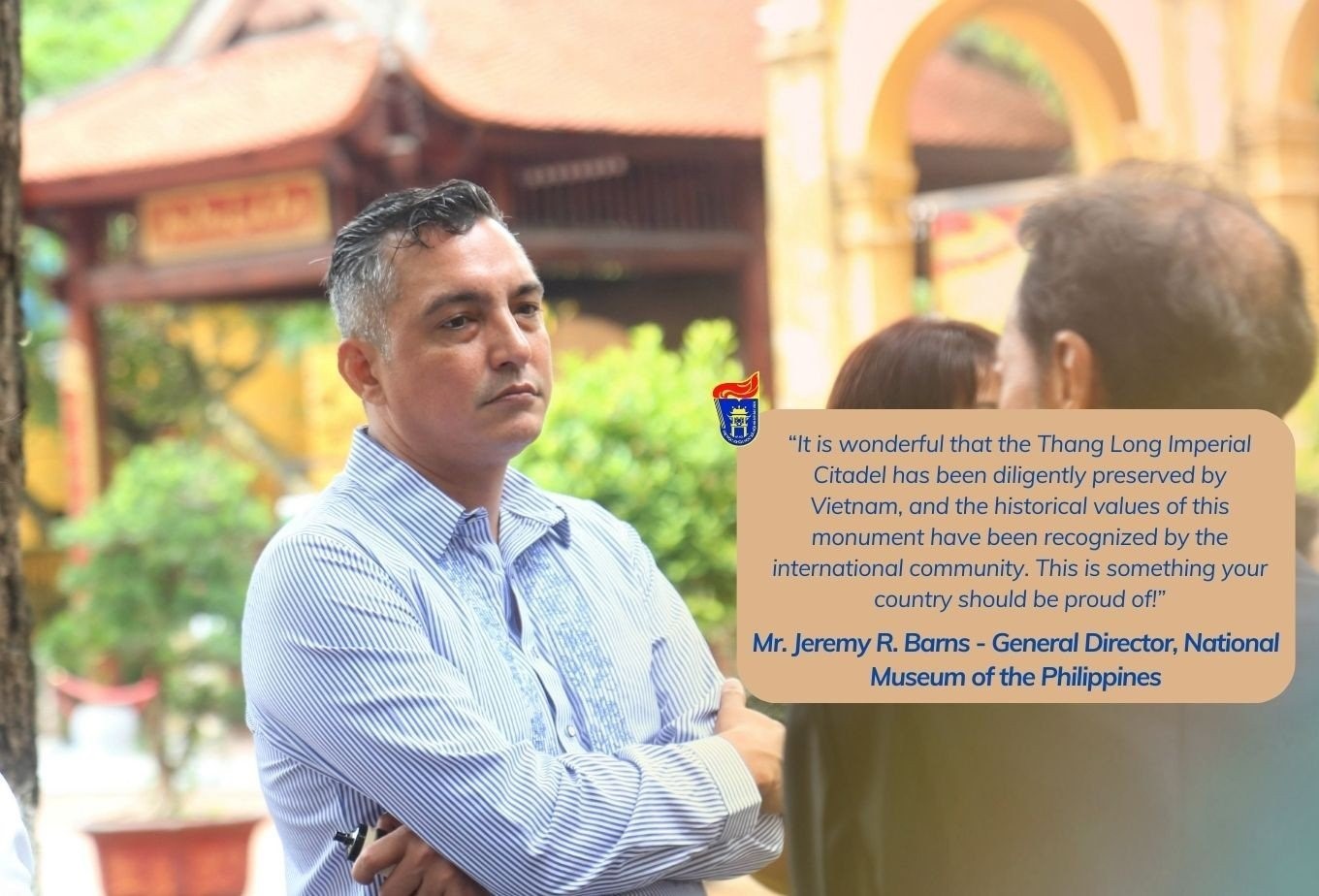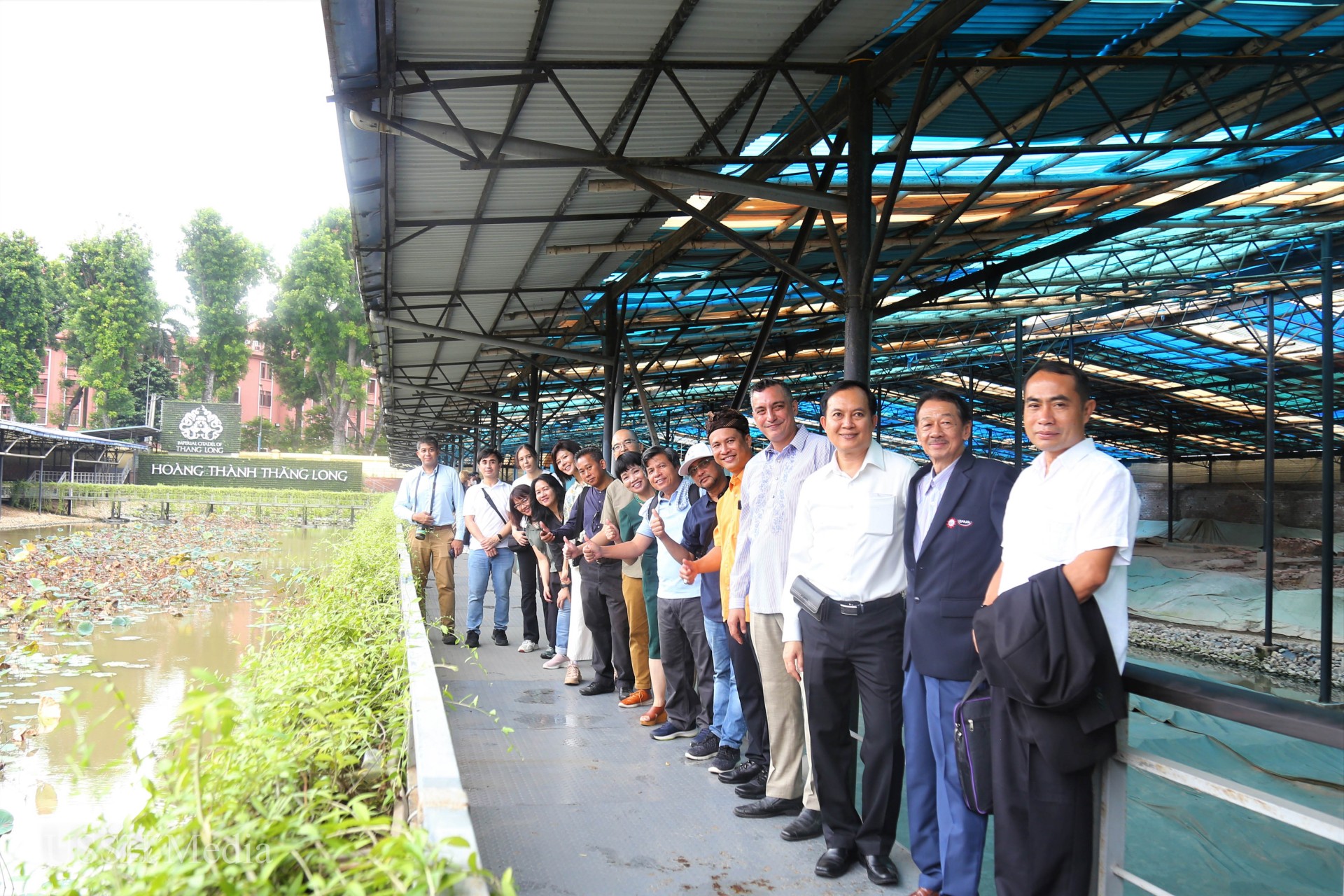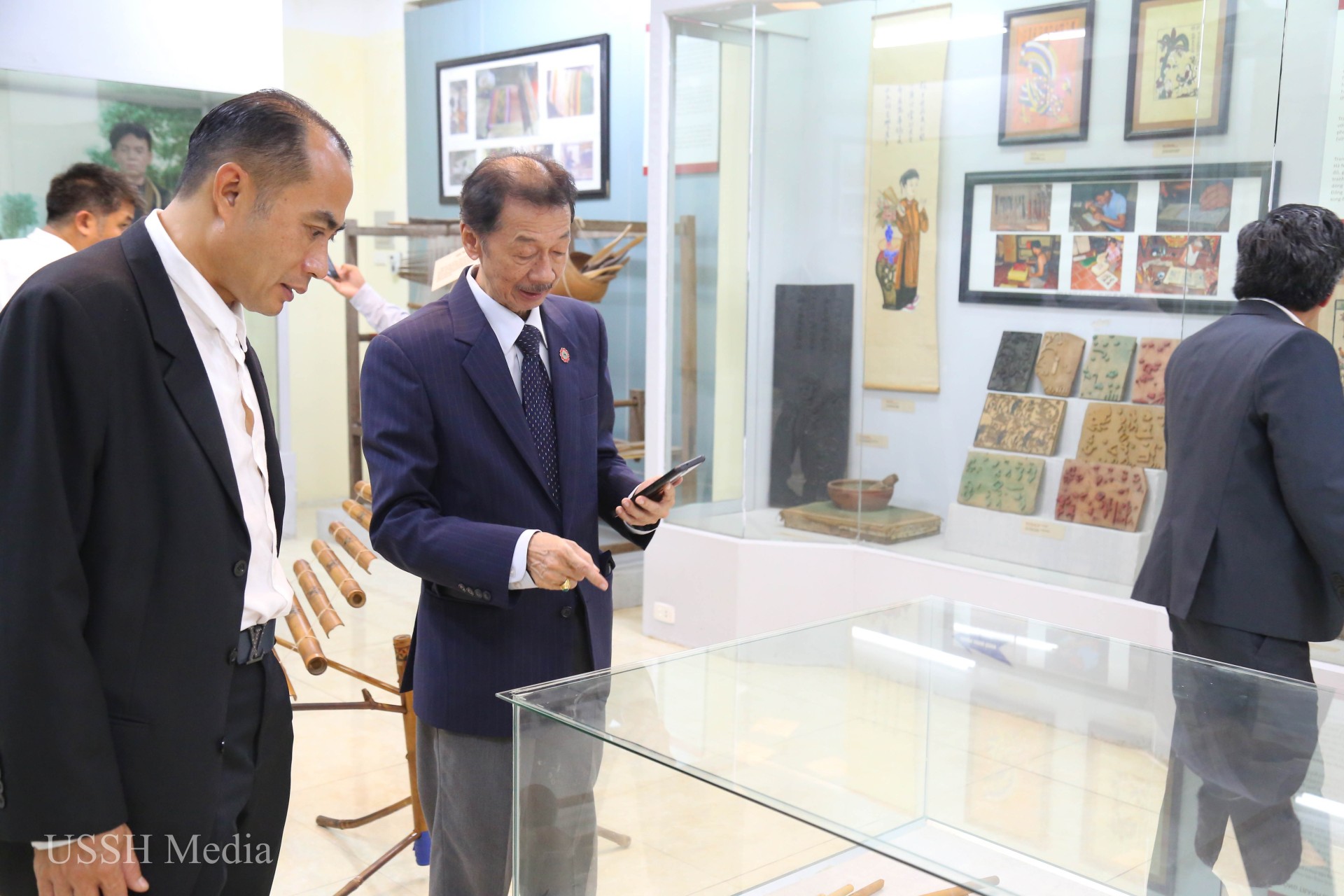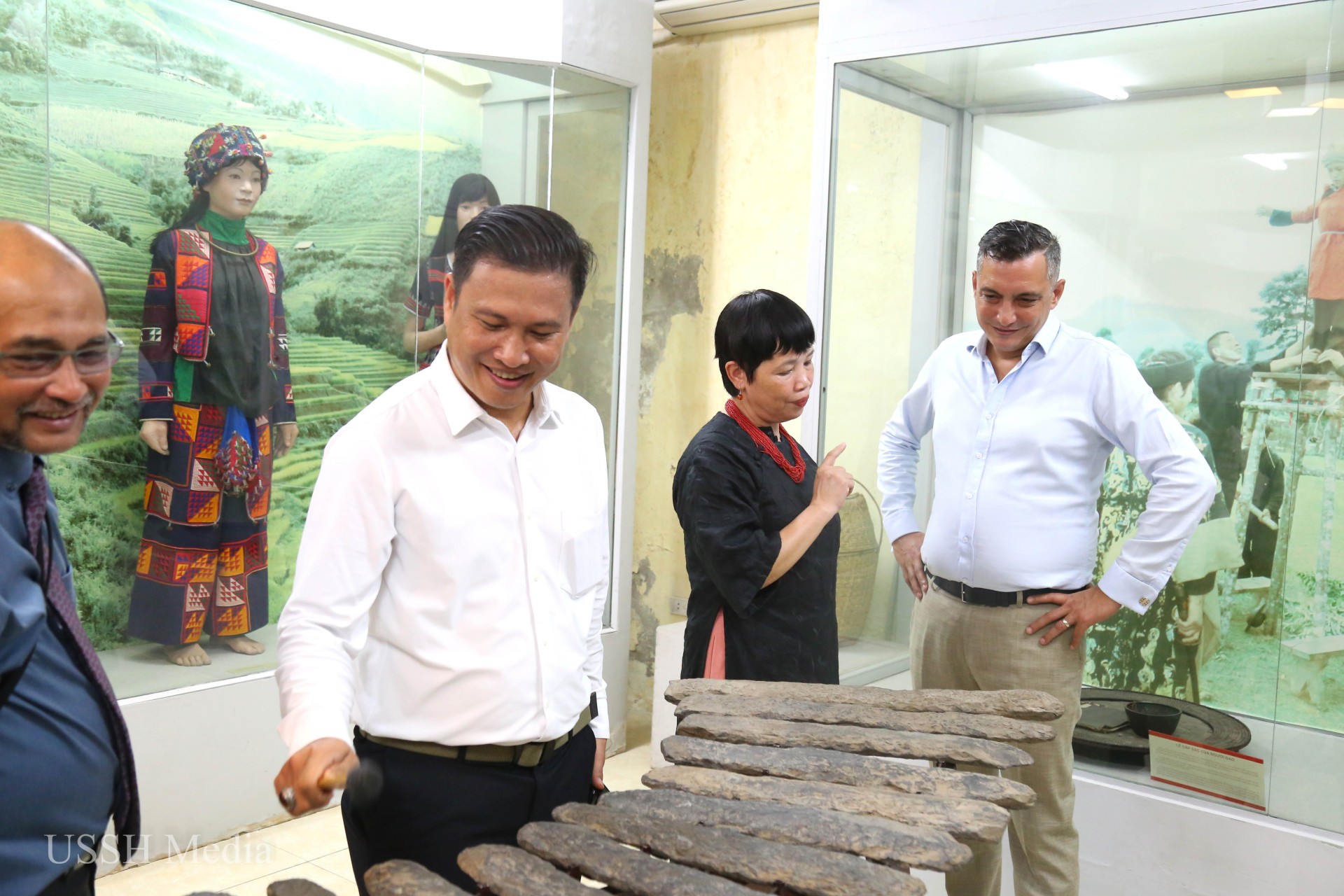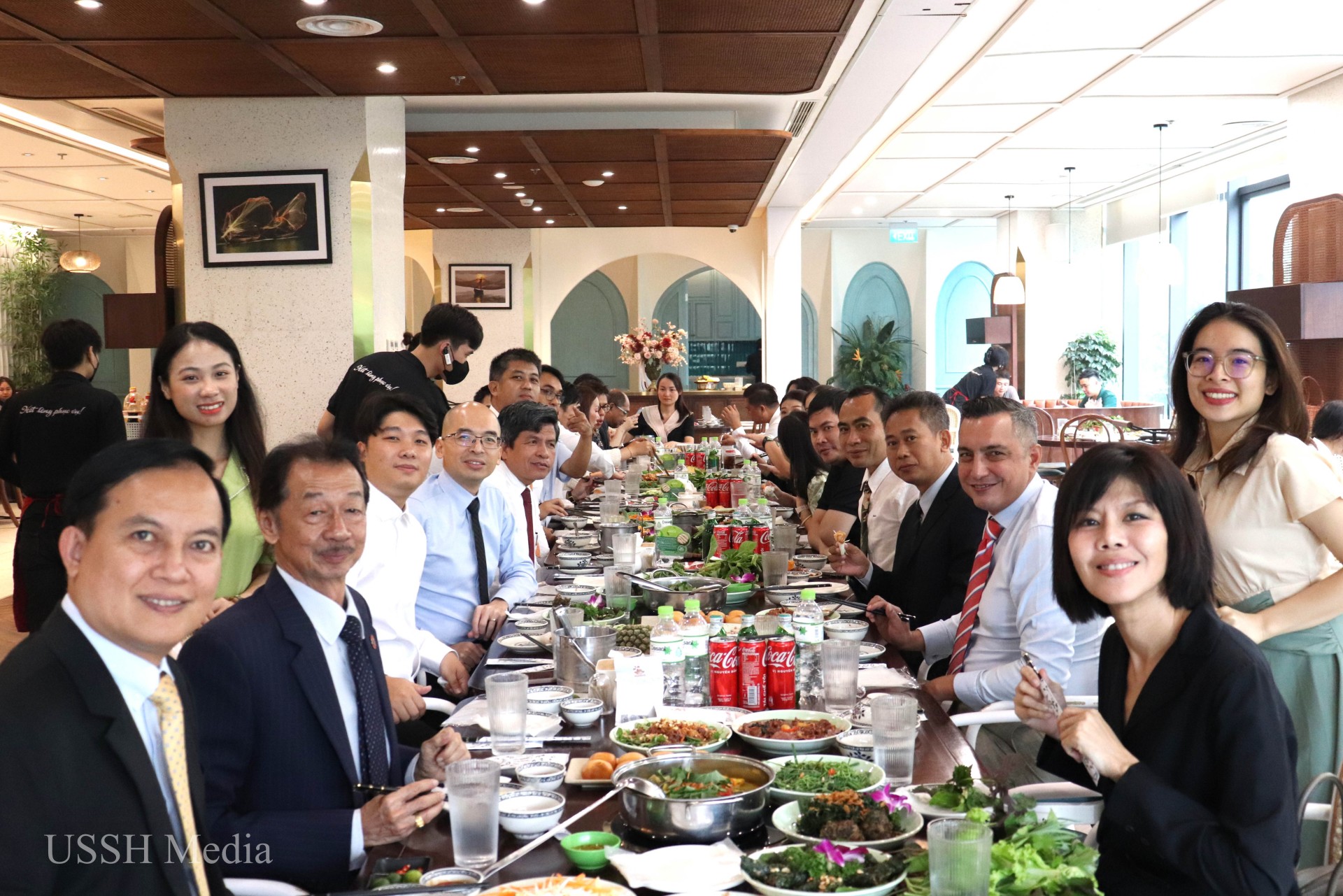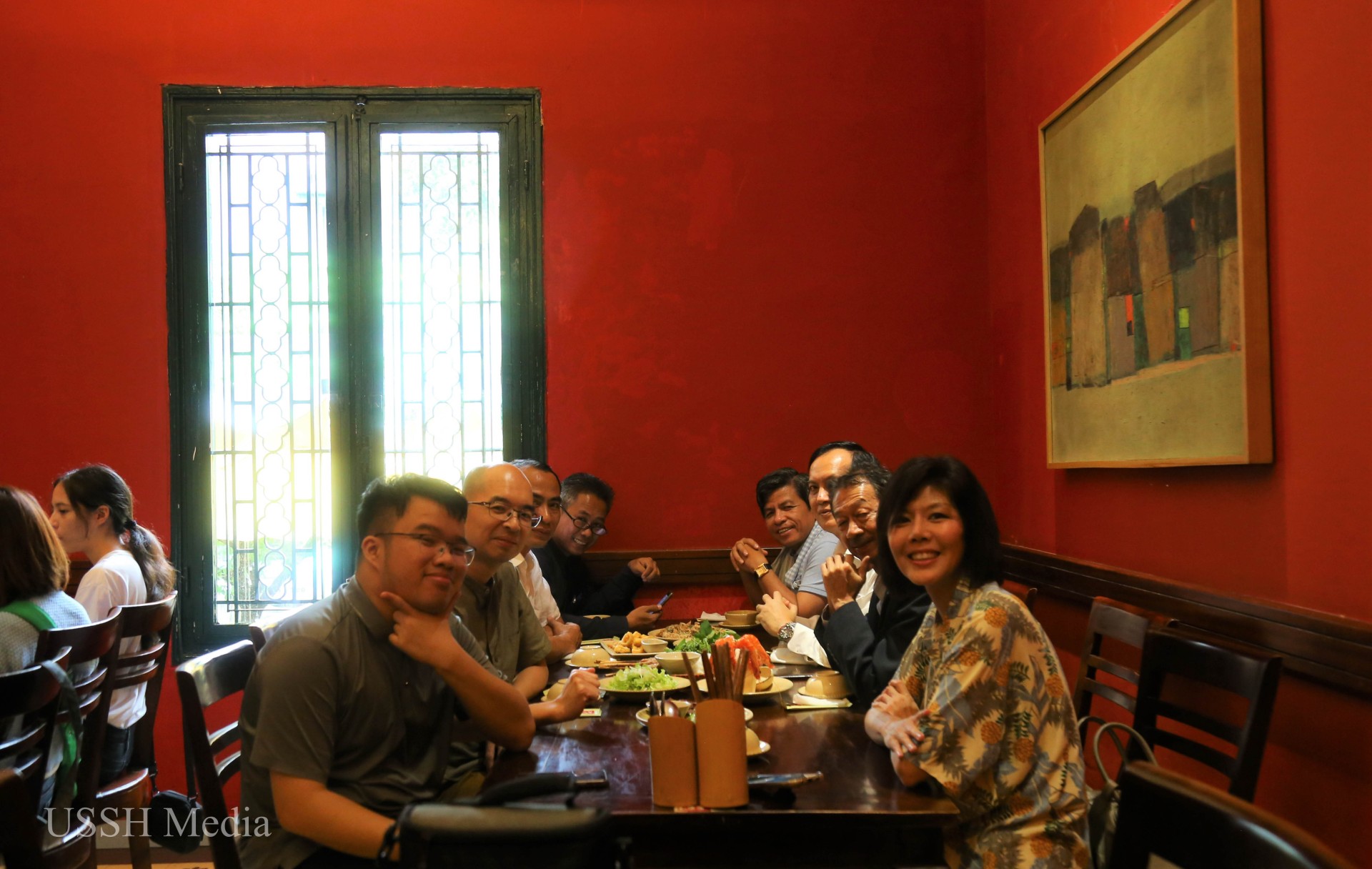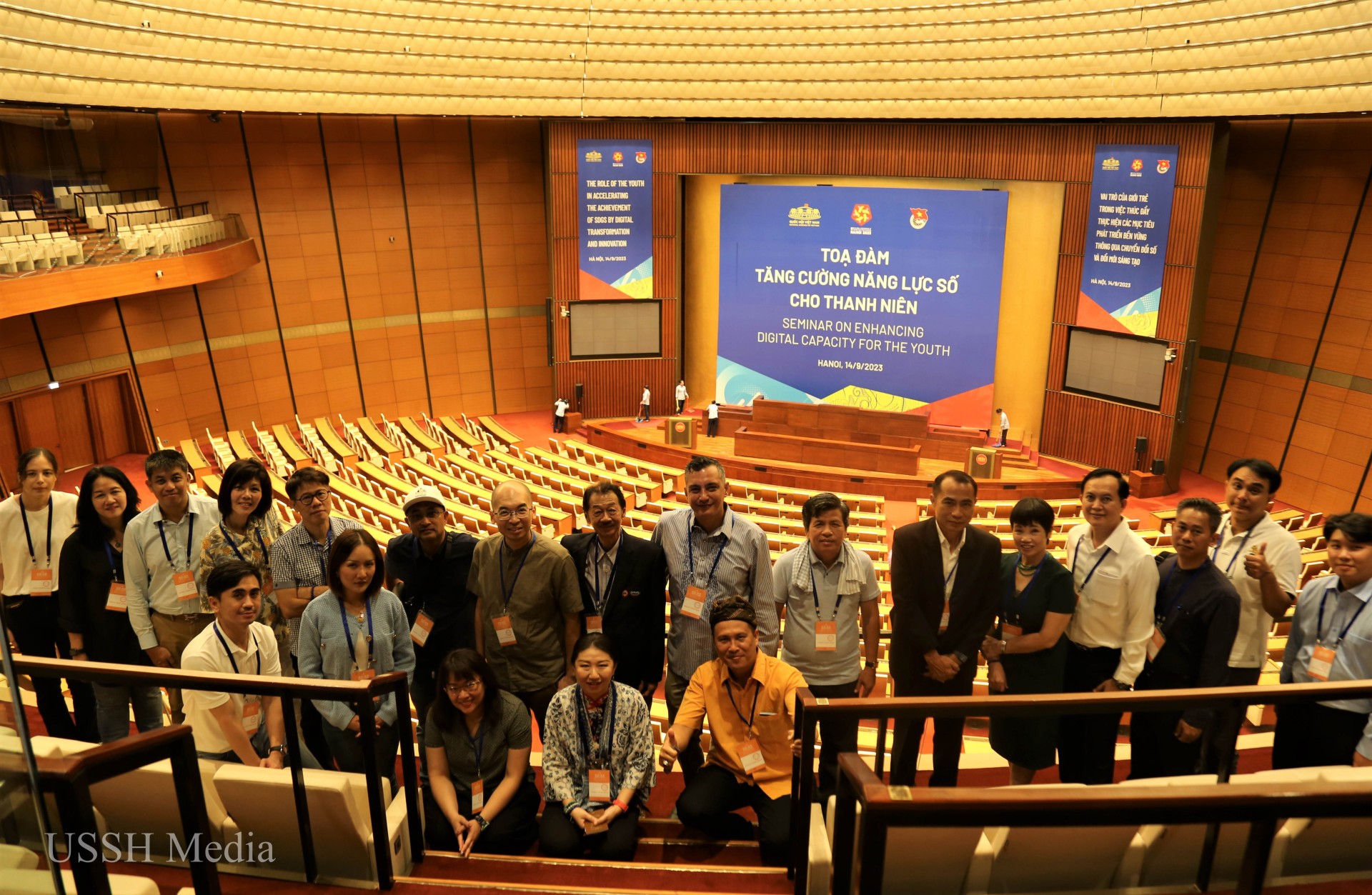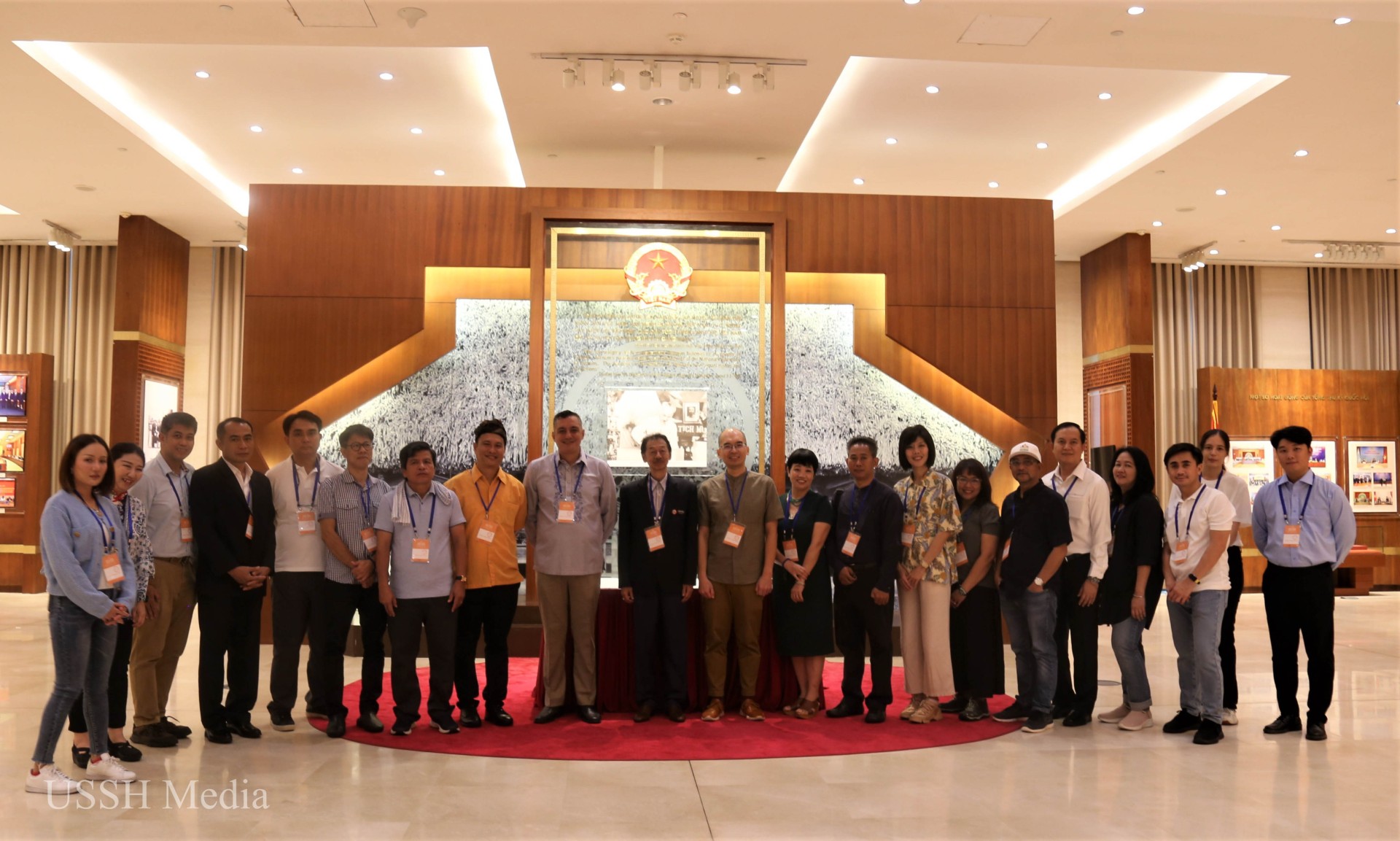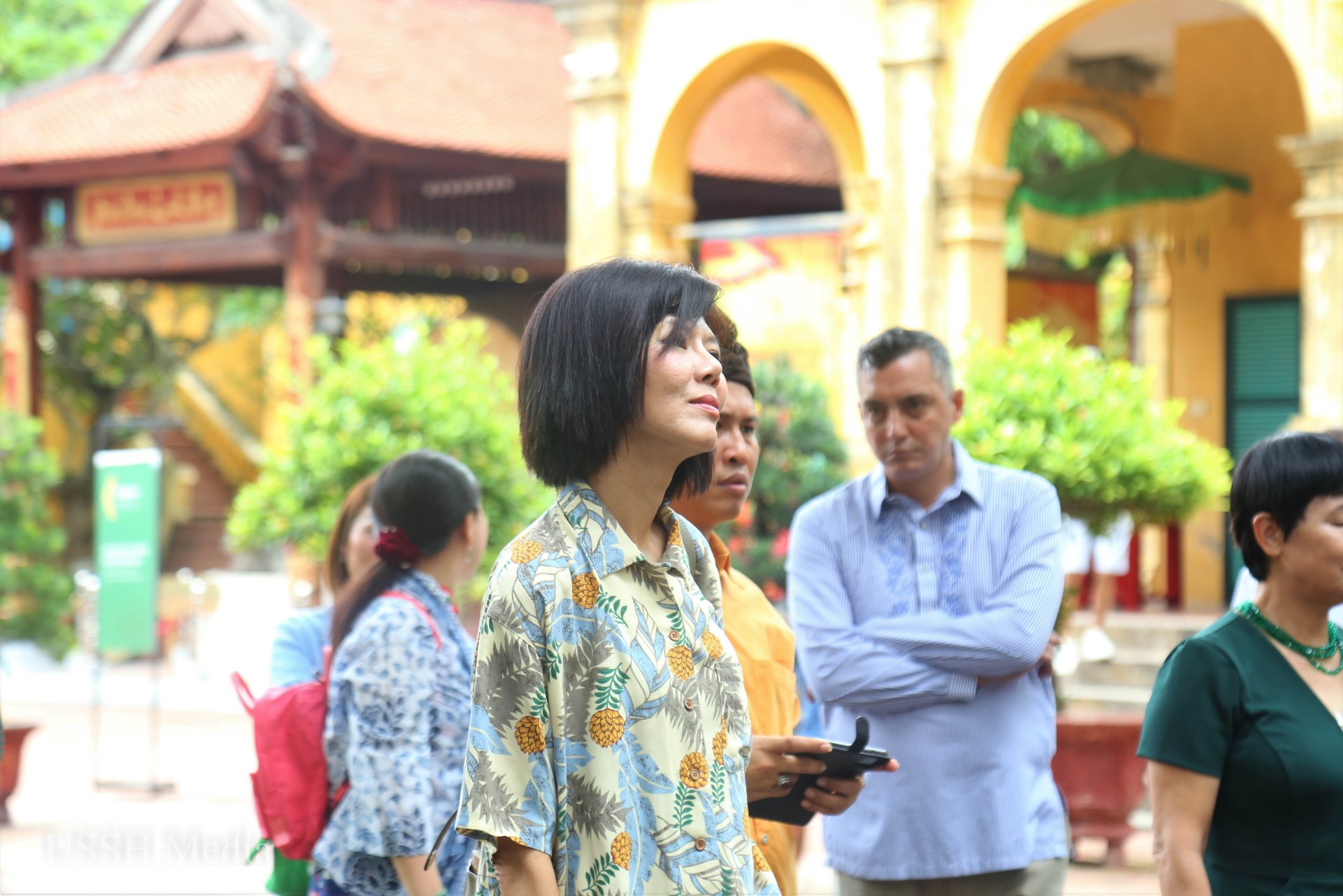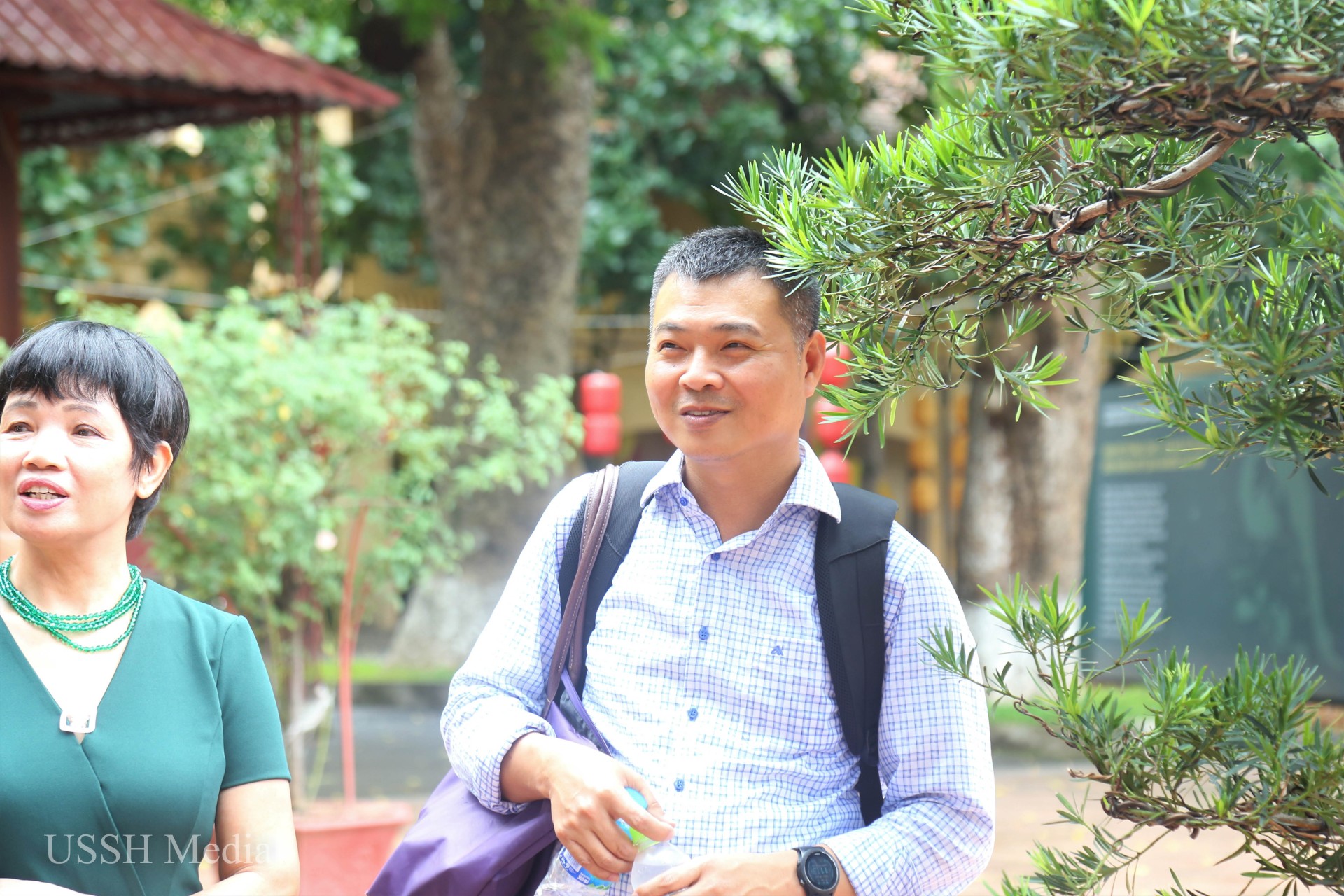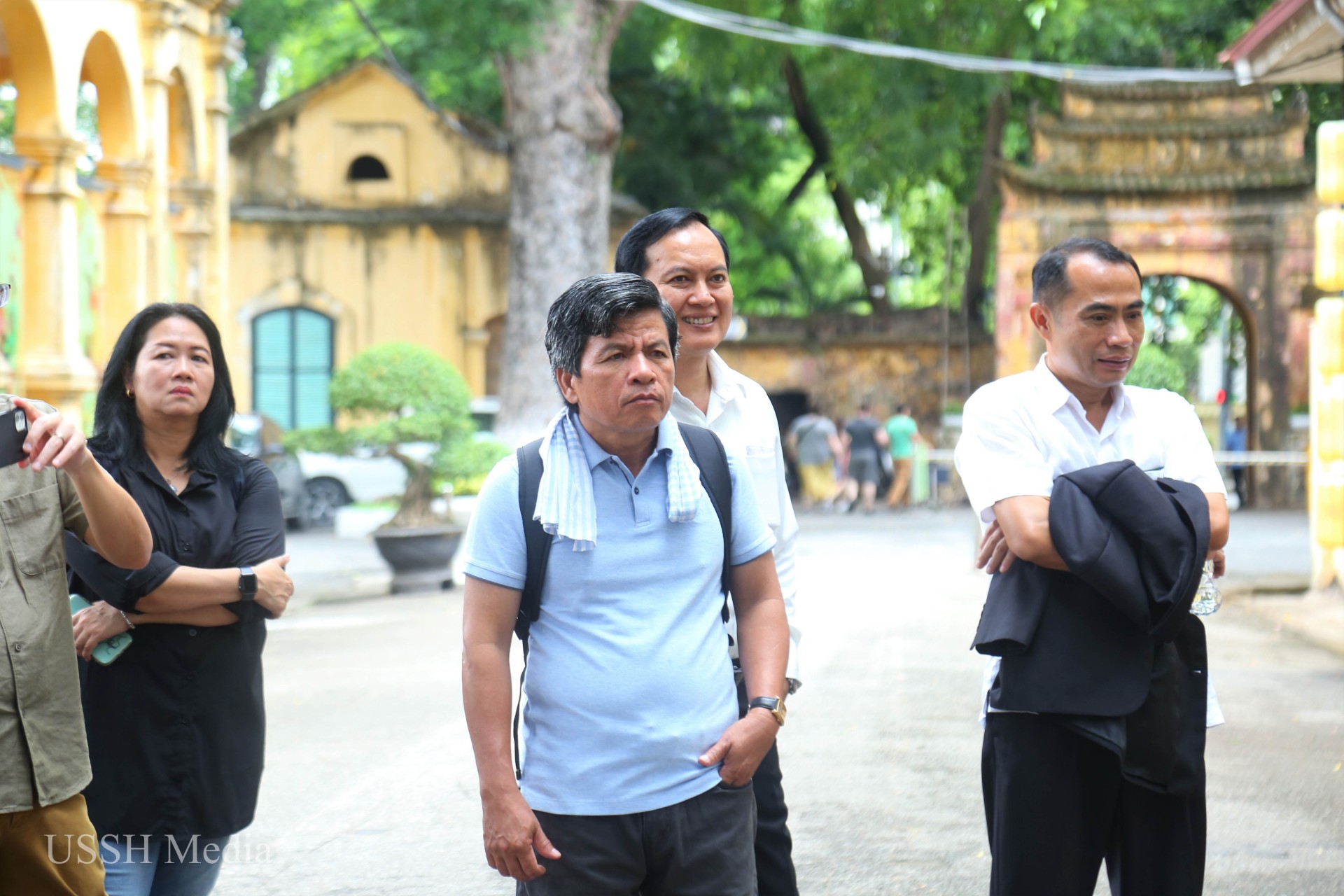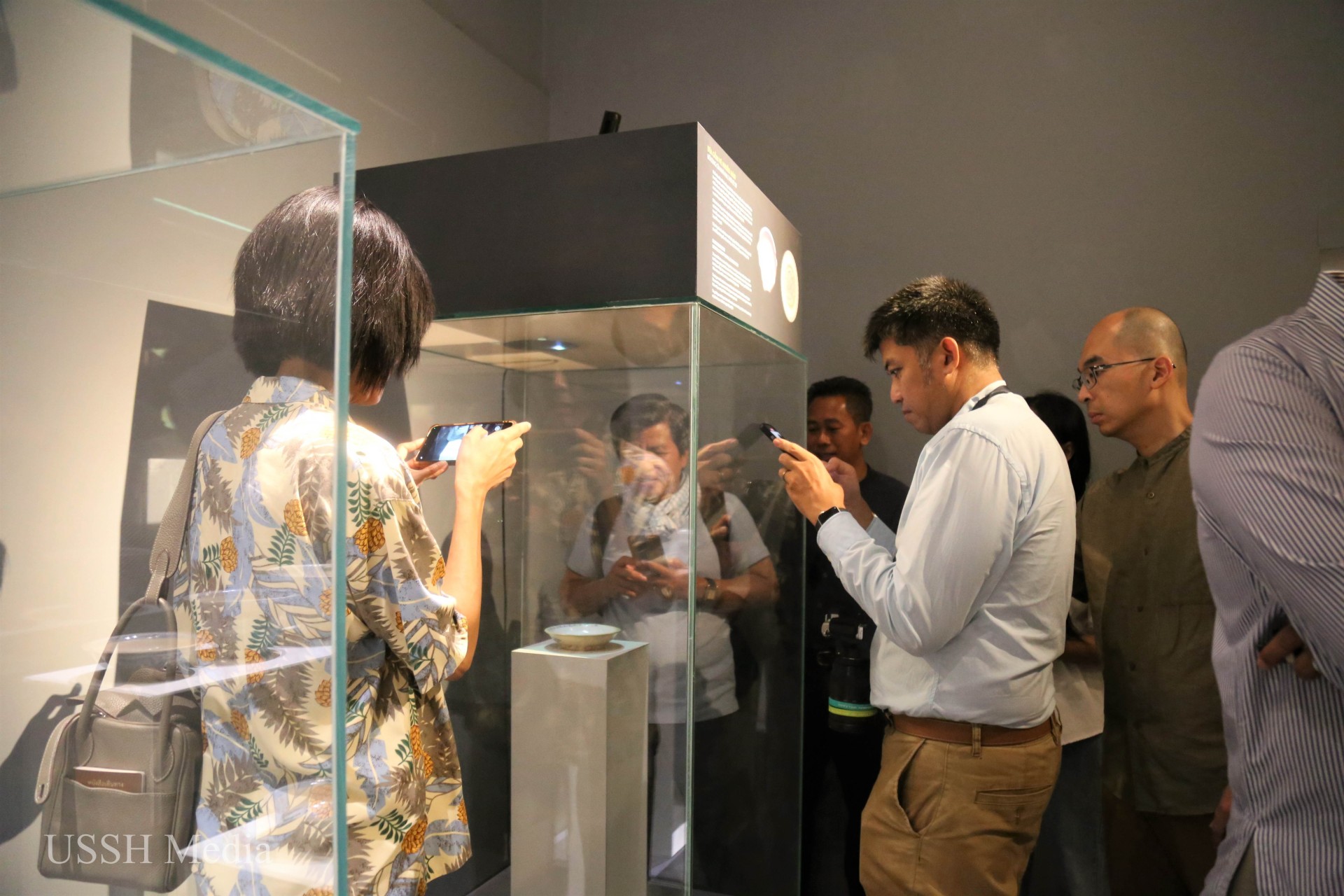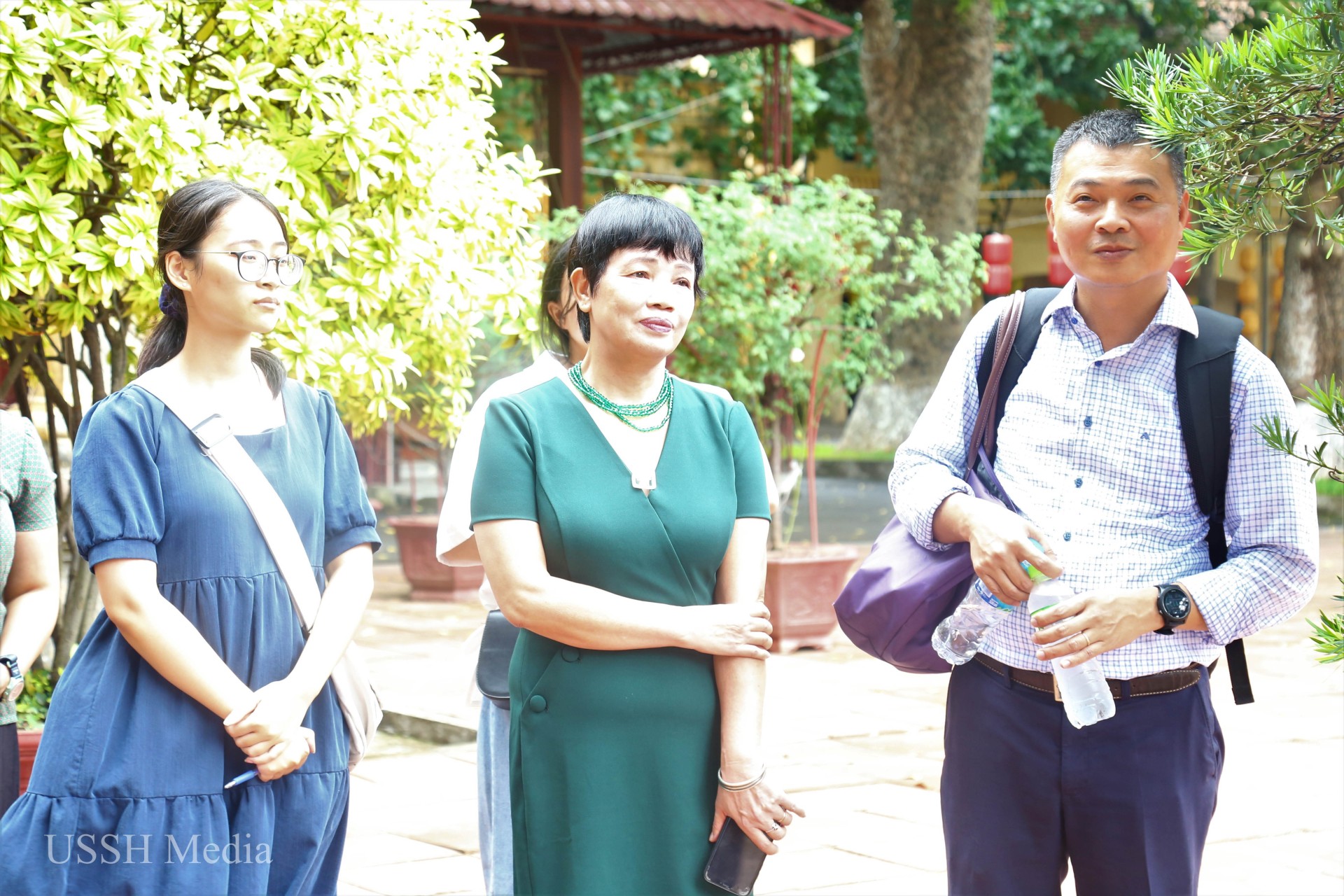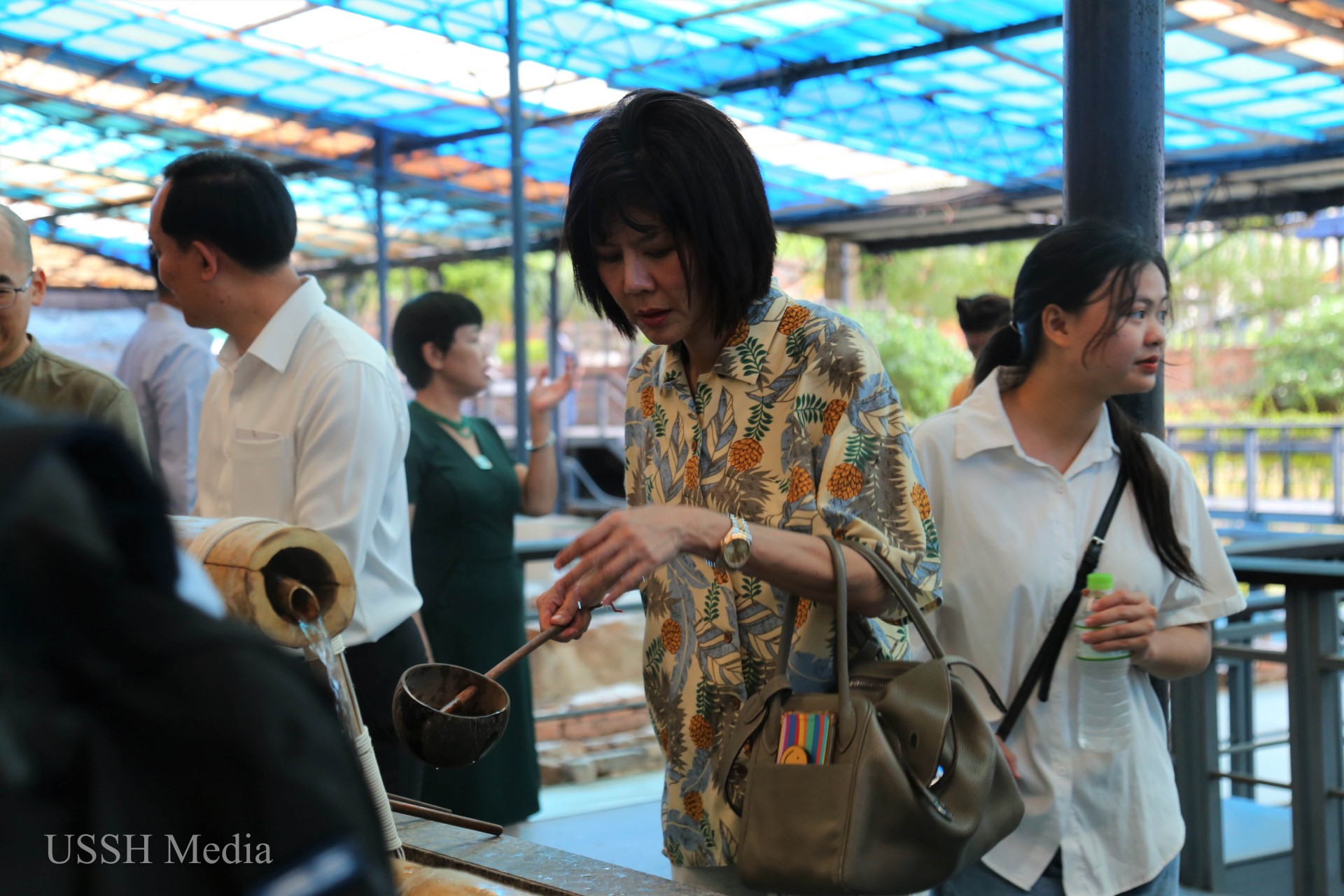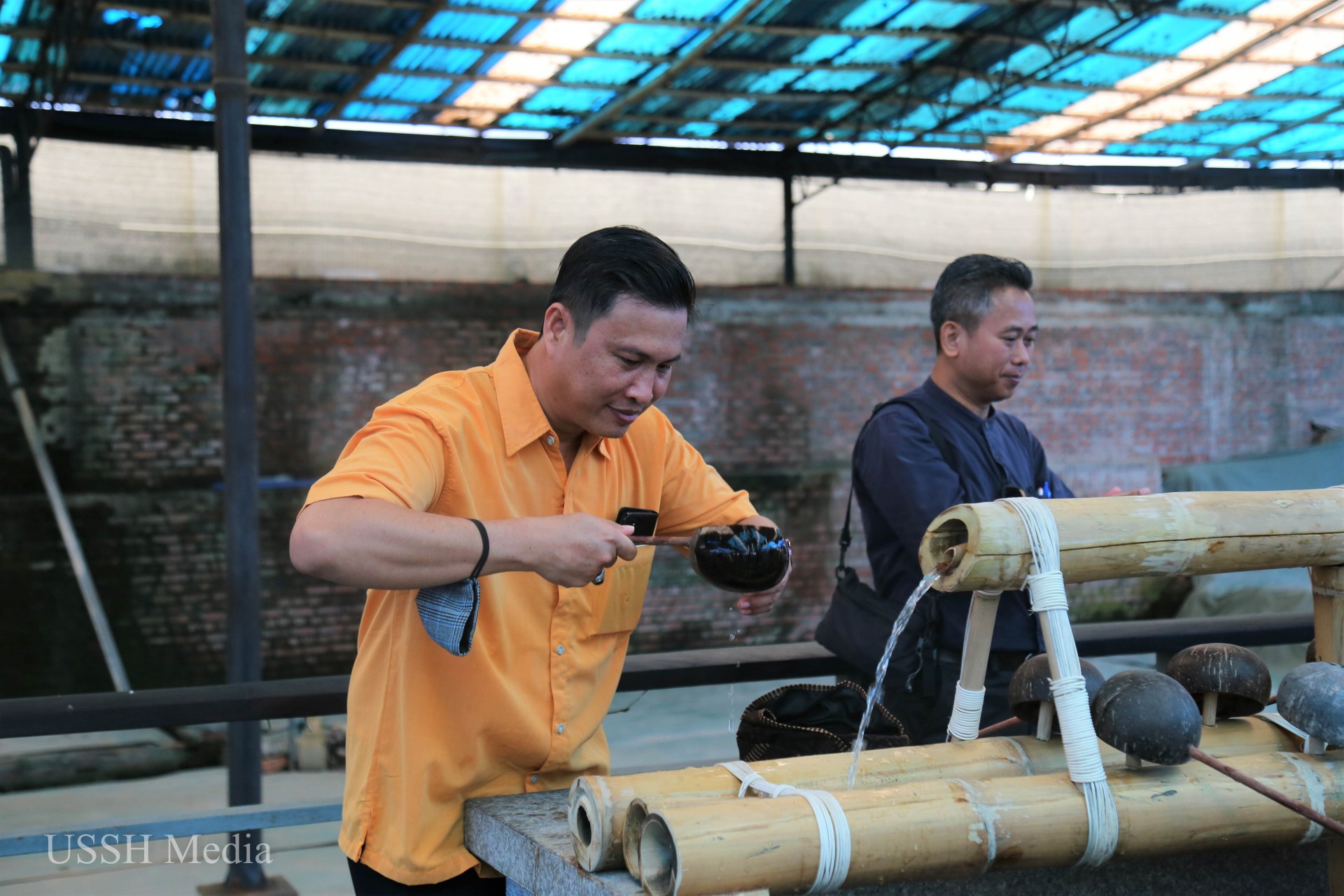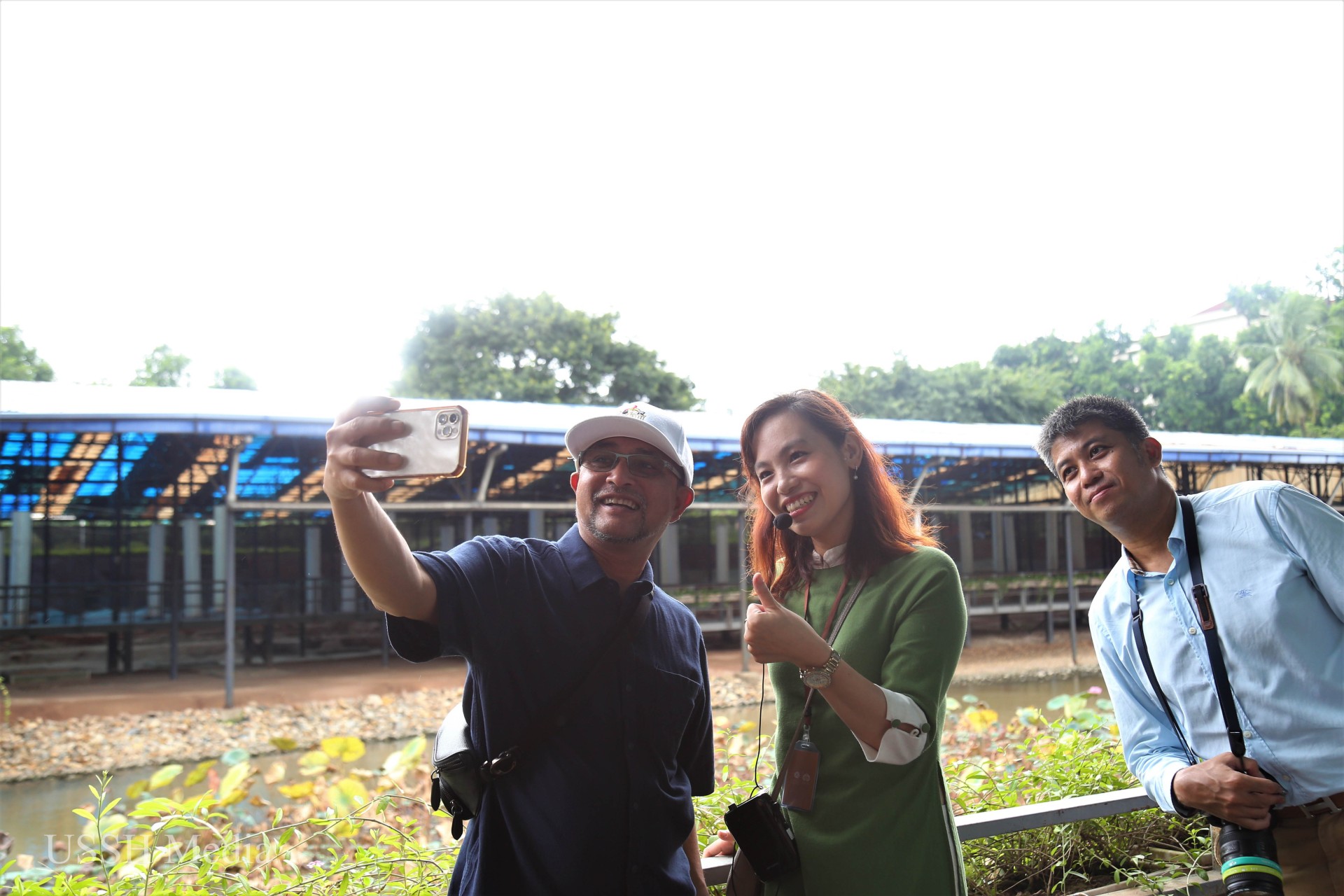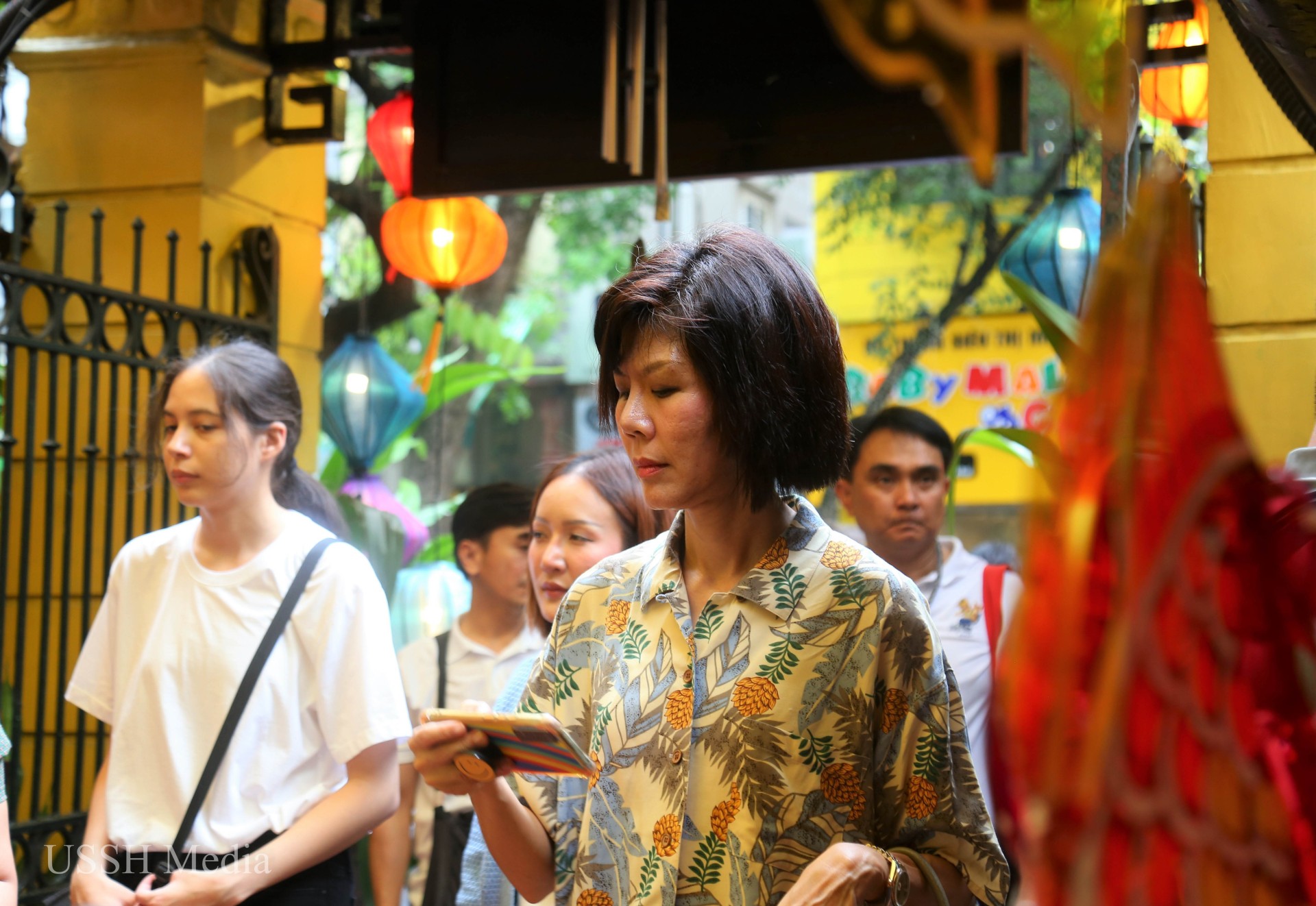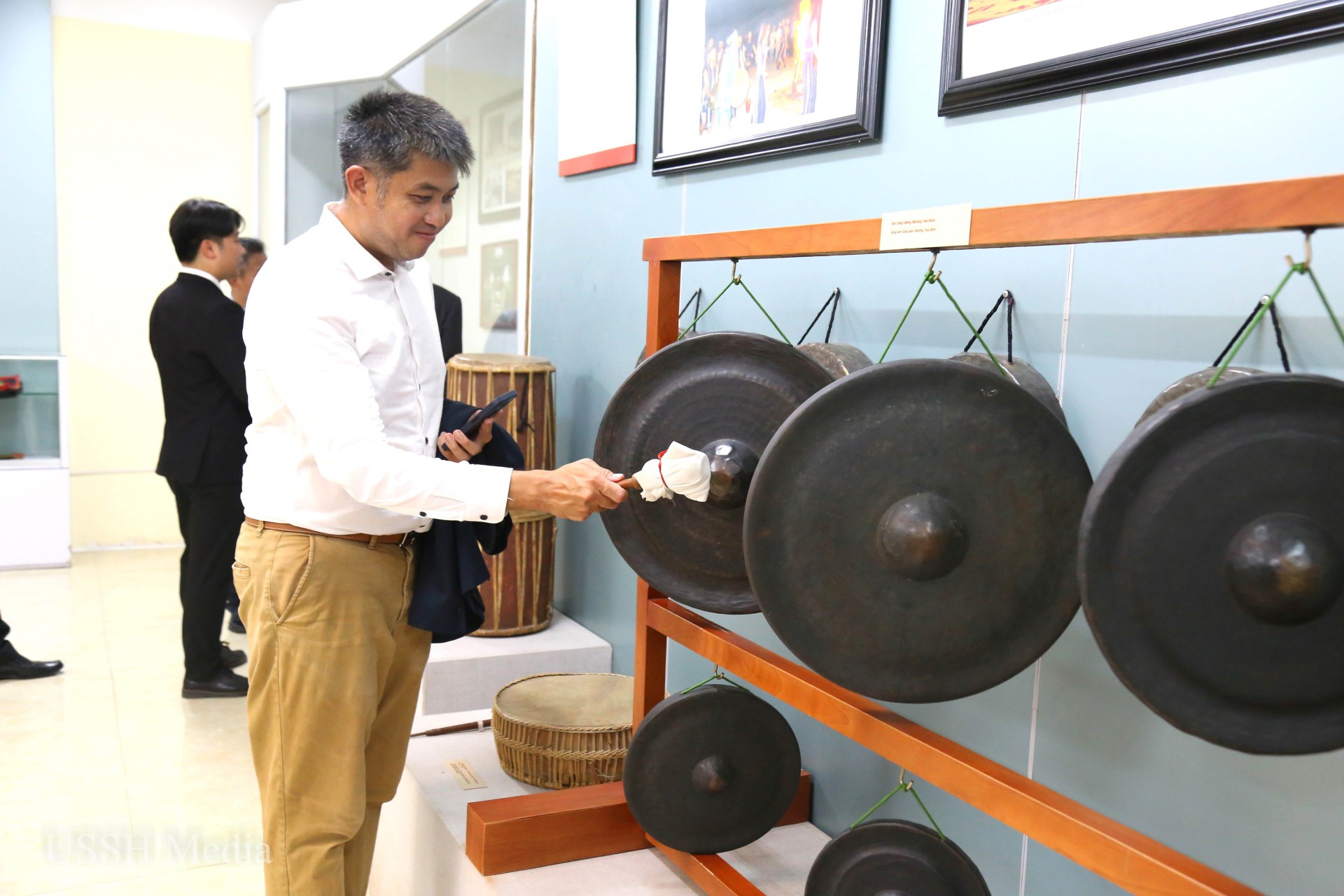Embracing the historical and cultural values at the Vietnam National Assembly House Museum
Visiting the museum at the National Assembly building, SEAMEO SPAFA delegates were amazed by the historical value and cultural depth of antiques before and after the construction of Thang Long Imperial Citadel. Continuing and honoring traditional national importance, this museum is the ongoing chapter of historical stories for the future descendants of Vietnam.
The museum at the National Assembly House is the first archaeological museum in Vietnam. On an area of 3,700 m2, the museum displays more than 400 relics and nearly 10 historical sites, selected among tens of thousands and 140 historical sites from the foundation. All were discovered and preserved by archaeologists during excavations at the National Assembly House construction area in 2008 - 2009.
Along with the museum tour guide, Prof. Dr. Lam Thi My Dung - Former Head of the Department of Archeology, Faculty of History, Former Director of the Museum of Anthropology, University of Social Sciences and Humanities ( game đánh chắn online đổi thưởng
), and Dr. Nguyen Van Anh - Lecturer at the Department of Archeology, Faculty of History, game đánh chắn online đổi thưởng
had discussions with delegates from 9 Southeast Asian countries about the historical and cultural artifacts displayed at the museum.
The museum is divided chronologically according to archaeological stratigraphic slices from ancient to modern days, including two main areas. Basement 2 displays the pre-Thang Long period - before King Ly Cong Uan made a mandate to move the capital. Meanwhile, Basement 1 shows the Thang Long period - that is, after the year 1010.
The museum not only brings forth a new presence to the National Assembly House, affirming the favorable policy of the Party and the State of Vietnam in preserving and promoting the Thang Long Imperial Citadel Heritage, but also highlights the promotion of values of Vietnam's national cultural heritage to heads of state, the masses, and international tourists.
SEAMEO delegates from 9 Southeast Asian countries appreciate the valuable antiques at the National Assembly Building Museum in Ba Dinh, Hanoi.
A representative from Thailand, Mr. Sathaporn Thiangtham, visited the Vietnam National Assembly Museum.
A representative from Thailand, Mr. Sathaporn Thiangtham, said: The National Assembly Museum is a testament to the importance of using artifacts and relics to validate past historical moments so that foreigners can experience moments from the heroic history of Vietnam.
Mr. Sathaporn Thiangtham remarked: "We are very grateful to the University of Social Sciences and Humanities for giving us a valuable opportunity to visit and explore Vietnam’s history and culture at the National Assembly Museum. This is such a memorable experience for all of us!"
Thang Long Imperial Citadel - Preserving the global values of humanity, arts, sculpture, and architecture
SEAMEO SPAFA's delegates visited Thang Long Imperial Citadel - a complex historical site associated with the history of Thang Long capital, Hanoi. This massive architectural work was built by dynasties of Vietnam during many historical periods and became the most important monument among the significant locations. The unique architectural traces and millions of precious artifacts have partly recreated the timeline of Vietnam, which lasted from the Northern neighbor's domination led by the Sui and Tang dynasties (7th century to 10th century AD) and passed through Vietnam's dynasties of Ly, Tran, Le, Mac, and Nguyen (1010-1945).
SEAMEO SPAFA delegates at the Thang Long Imperial Citadel- the 900th World Heritage Site recognized by UNESCO
The Central Sector of Thang Long Imperial Citadel - Hanoi is the only evidence of the long-standing cultural traditions of the Vietnamese people in the Red River Delta throughout its 13-century continuous history to this day. The archaeological cultural layers and architectural and artistic relics of the heritage reflect the ideologies, politics, administration, laws, economics, and culture of the various dynasties that ruled Vietnam for nearly a thousand years. It is rare to find a heritage demonstrating such a long-term continuity of political and cultural development as the Central Sector of Thang Long Imperial Citadel - Hanoi.

Commenting highly on the proud history of Vietnam at Thang Long Imperial Citadel, Mr. Jeremy R. Barns - General Director of the National Museum of the Philippines, happily shared: "I had the opportunity to come to Vietnam many times; I also learned a lot of information about your beautiful country, so I can truly appreciate the importance of the Imperial Citadel of Thang Long.
It is beautiful that Vietnam has diligently preserved this monument, and the international community has recognized the historical values of Thang Long Imperial Citadel. This is something your country should be proud of!"
Mr. Jeremy R. Barns - General Director, National Museum of the Philippines, during a visit to the Imperial Citadel of Thang Long on September 13, 2023
Mr. Jeremy R. Barns said: "As one of the members of the Board of Directors of SEAMEO SPAFA from the Philippines, I know that SPAFA has enough potential and ability to provide technical support for heritage restoration and conservation projects in Vietnam. In addition, our colleagues in Vietnam have also conducted valuable studies on preserving this historical and cultural heritage. This will be a valuable experience for future heritage conservation activities in Vietnam." Mr. Jeremy R. Barns said that SEAMEO SPAFA and other foundations and organizations should participate in and support projects focused on preserving historical and cultural heritage in Vietnam.
The Museum of Anthropology, the first museum of a university in Vietnam, was visited by SEAMEO SPAFA delegates during their time at the University of Social Sciences and Humanities, VNU.
The Museum of Anthropology at the University of Social Sciences and Humanities, VNU, Hanoi, serves as Vietnam's inaugural university museum and is a model that bridges training and real-world applications. In addition to its educational role, the museum also facilitates scientific research and scientific-cultural services. It conducts research and applies scientific and technological advancements in the collection, display, preservation, and management of artifacts, and documents.
Prof. Dr. Lam Thi My Dung, former Director of the Museum of Anthropology, discussed the cultural significance of the museum's artifacts with the SEAMEO SPAFA tourists.
Since its inception, the Museum of Anthropology has become a well-known destination for students and lecturers to explore the nation's history and culture. The museum encourages visitors to explore and research, shedding light on the past and present cultural life of Vietnamese communities. The main visitors to the museum are the teaching staff and students of game đánh chắn online đổi thưởng
.
Currently, the museum features two permanent galleries dedicated to Archaeology, Anthropology, and Vietnamese Culture, as well as three 3D display models showcasing the museum, Temple of Literature, and the human body. In the virtual museum, there are 24 captivating topics covering agriculture, ceramics, prehistoric metallurgy, Thai weaving, Dong Ho painting, the history of Confucianism and Confucian examinations, and Vietnamese pagoda architecture. The Museum of Anthropology also collaborates with the Vietnam History Museum, the Museum of Ethnology, and the UNESCO Association for the Conservation of Vietnamese Antiquities to participate in themed exhibitions.
During the 2023 annual meeting of SEAMEO SPAFA in Hanoi, delegates from Southeast Asian countries had the opportunity to taste traditional Vietnamese dishes such as spring rolls, green rice, beef pho, Hue beef noodle soup, fish sauce hot pot, and egg coffee.
The cultural and historical charm of Hanoi's scenic sites, museums, and culinary traditions, combined with the warm hospitality of the Vietnamese people and the Board of Directors, lecturers, and staff of the University of Social Sciences and Humanities, VNU, in particular, left a positive and cordial impression on the SEAMEO SPAFA delegates.
VNU- game đánh chắn online đổi thưởng
extended its congratulations on the success of the 2023 Annual Meeting of SEAMEO SPAFA! The University looks forward to meeting our international visitors again in the future projects at the game đánh chắn online đổi thưởng
, VNU, and in the country of Vietnam!
Let's cherish the memorable moments of delegates from 9 Southeast Asian countries - SEAMEO SPAFA members at Vietnam's landmarks:
